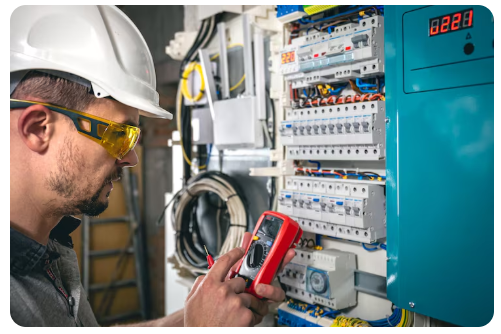Electrical maintenance and repair are inherently high-risk tasks, and no procedure is more critical for safety than the circuit breaker lockout process, commonly known as Lockout/Tagout (LOTO).
This mandatory procedure ensures that a circuit is de-energized and cannot be accidentally re-energized while an electrician or technician is working on equipment connected to it.
The successful and safe execution of a LOTO procedure is a testament to the professionalism and rigorous training of electrical experts. This article details the five essential steps an electrician follows to handle the job of circuit breaker lockout safely and perfectly.
Preparation and Communication
The process begins long before the power is switched off. The electrician first identifies all energy sources, including the circuit breaker that needs to be isolated. A crucial preliminary step is communicating the plan to all affected personnel.
The electrician notifies co-workers, building occupants, or operations managers about the equipment to be shut down, the reason for the service, the estimated duration, and the person responsible for the procedure. This communication ensures no one attempts to restart the equipment inadvertently.
Identifying and Isolating the Energy Source
Next, the electrician follows specific protocol to identify the correct circuit breaker or disconnecting switch. They use accurate labeling and sometimes tracing tools to confirm the exact breaker controlling the equipment.
Once identified, the energy isolating device (the breaker) is operated to de-energize the equipment. This is a deliberate, careful action that completely separates the circuit from its power source, making the system electrically safe to work on.
Applying the Lockout Device and Tag
This is the central step of the LOTO procedure. The electrician applies a personal lock, typically a standardized padlock, directly to the circuit breaker handle or switch in the “off” or “open” position.
This lock ensures that the breaker physically cannot be turned back on. Immediately following the lock, a tag is attached.
This tag clearly identifies the worker responsible for the lockout, the date, and the reason for the device being locked, fulfilling the essential documentation requirements for the Circuit breaker lockout process.
Verifying Zero Energy State
The most vital safety check is the verification that the equipment is genuinely de-energized. The electrician uses a reliable, calibrated voltage tester or multimeter to test the circuit itself.
They test the circuit in multiple ways: checking all lines and phases, and ensuring the tester is working correctly both before and after the measurement.
This step, known as the “test for dead,” confirms a zero energy state, providing the final assurance that the workspace is safe before any hands-on work begins.
Performing the Repair or Maintenance
Only after the zero energy state has been verified can the electrician safely proceed with the necessary repairs, maintenance, or installation work. During this time, the lock and tag remain firmly in place.
The electrician performs the task efficiently, ensuring that the work adheres to all relevant technical and safety standards. The sustained presence of the lock acts as a continuous, visible reminder that the circuit is under maintenance and is not to be tampered with.




